 |
Cottony cushion scale (Hemiptera) on rose (Rosa); note infestation along leaf veins and on canes; egg sacs are large, white and cottony |
Scale insects are common pests of many trees and shrubs. There are two general types of scale– armored scale and soft scales. A few of the species that fall into the armored scales are oystershell scale, San Jose scale, euonymus scale, and pine needle scale. Some soft scales are cottony maple scale, magnolia scale, and tuliptree scale. Scale coverings range in size, shape, and color depending on species.
Symptoms and Diagnosis
Trees heavily infested with armored scale often look water-stressed. Leaves turn yellow and drop, twigs and limbs may die, and the bark cracks and gums. Armored scales can kill trees and must be controlled when their population gets too high.
Soft scales also reduce plant vigor, but usually not enough to kill the plant. The main problem soft scales cause is the large amounts of honeydew they produce, which can cover leaves and fruit and act as a growth medium for black, sooty mold. Honeydew also attracts ants, flies, wasps, and bees that can become a nuisance.
Scale are identified by their body covering, which normally appears as a colored raised area on the leaf or stem of the plant that can be flicked off with the point of a knife or a fingernail. They vary in size but are generally only about 1/8 inch long.
Life Cycle
The life cycle of each species of scale can vary depending on the season and species. Armored scales usually have several generations a year, while soft scales have a single generation.
Scale overwinters on leaves, needles, stems, or twigs of the infested plant under the covering (shell) it creates. Under the scale shell, the female lays eggs. In the spring, the eggs hatch and the unprotected larvae (crawlers) emerge from under the protective shell and begin feeding on their own. The actual date of emergence varies with each type of scale insect and the weather. New plants can be infested when crawlers walk or are blown by the wind to a nearby plant. After a few days, the crawlers of armored scales settle down permanently, molt (and lose their legs), and begin to form their covering. Soon winged adult males crawl out from beneath their cover and mate with covered females. Adult male scales are tiny, winged, and seldom seen. Soft scale crawlers move about the plant a little longer after hatching before they settle down at a permanent feeding site. Some soft scale species move around during their immature stages and retain their legs for life. Their covers may be smooth or cottony, but they are firmly attached to their bodies. Soft scale tends to be larger than armored scale. Mature scales never move once they firmly attach themselves to the plant.
Integrated Pest Management Strategies
1. Maintain plant vigor. Maintaining a healthy plant is the best way to prevent infection by diseases or attack by insects. This can be accomplished by proper care including watering, fertilizing, providing a well-draining soil medium, adequate lighting, and air movement.
2. Pruning. Prune out heavily infested shoots or limbs. This will reduce the population and foster growth of new un-infested shoots.
3. Manual. Remove scale manually by rubbing them off the plant using your hand or a toothbrush. In the case of houseplants, use a cotton swab and rubbing alcohol.
4. Biological. Natural enemies, such as the ladybird beetle (ladybug) and small parasitic wasps, help control many scale species. Inspect the scale for round exit holes made by the emerging adult parasites. Before applying any insecticides, check the plant for the presence of the natural enemies and make sure that they are not already reducing scale numbers. If pesticide treatment is deemed necessary, confine the treatment to only those plants infested.
5. Chemical control. Many scale species on deciduous trees can be effectively controlled with either a dormant spray of refined horticultural, superior-type oil or summer oil spray or both. Oils and insecticidal soaps work by smothering the insect, both adults and crawlers. Other insecticides registered for use include malathion, bifenthrin, imidacloprid and pyrethrins.
6. Timing. Broad spectrum insecticidal treatments are most effective when applied in the crawler stage. Monitor by using double-sided sticky tape around some branches of the tree. Crawlers appear as tiny, pale yellow specks ("fried eggs") on the tape.
7.Repeat. In the case of overlapping generations, where every stage of development occurs, two to four applications at ten-day intervals will be needed.
8. Directions. Read and follow label directions. Check to insure the type scale and the host plant are listed on the label before using any insecticide.
Organic Strategies
Strategies 2 and 3 are strictly organic approaches. Strategy 1 could be considered an organic approach if an organic fertilizer is used. The use of natural biological enemies in Strategy 4 is an organic approach.
More images:
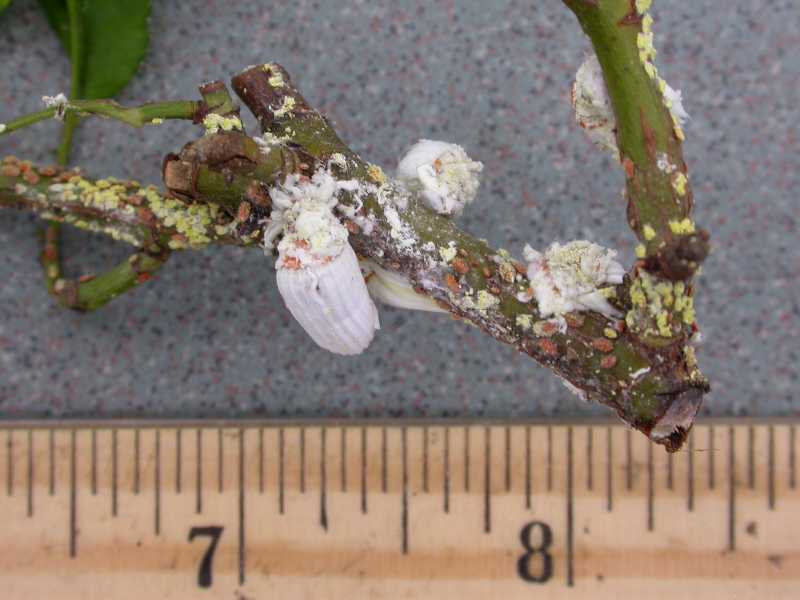 |
| Cottony cushion scale (Hemiptera) on rose (Rosa |
|
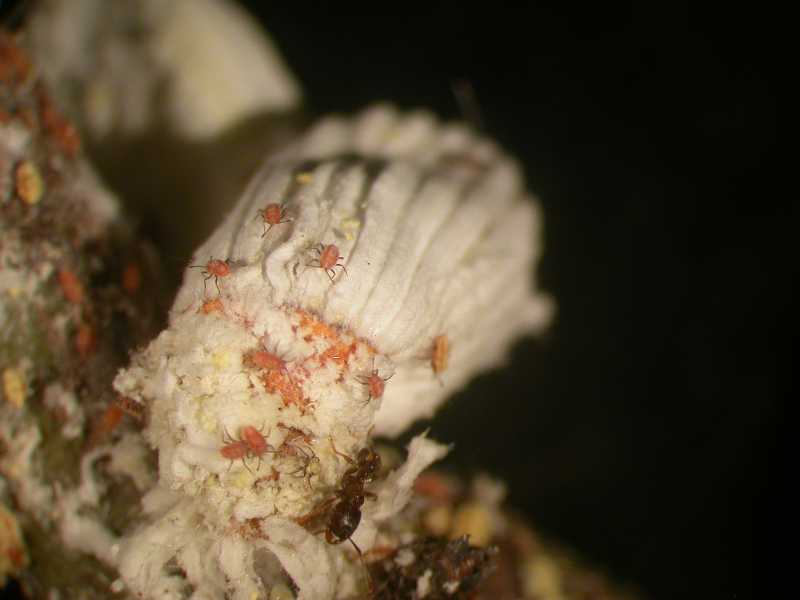 |
| Female cottony cushion scale (Hemiptera) with orange crawlers and an ant (Hymenoptera) |
|
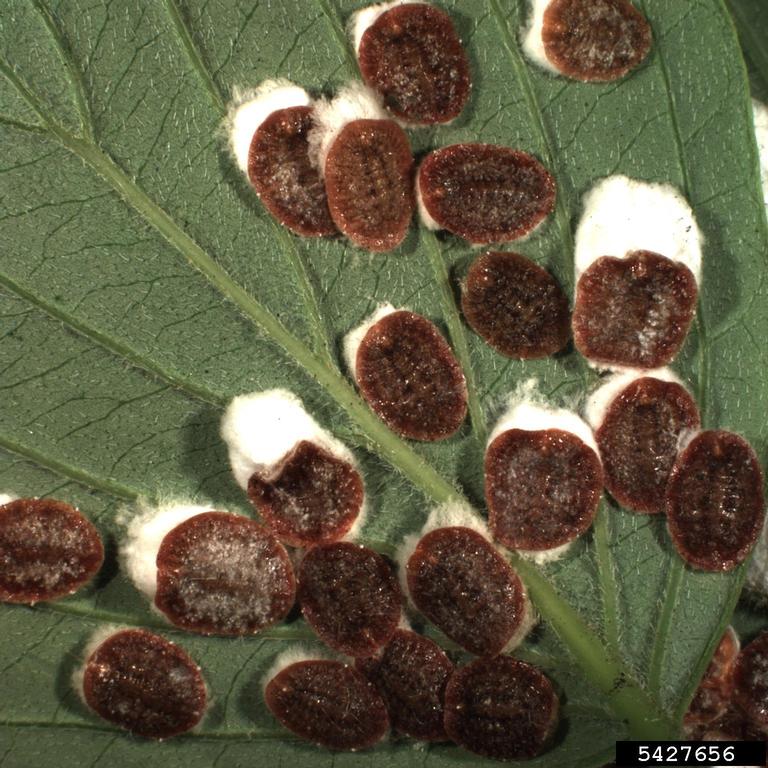 |
Cottony maple leaf scale (Hemiptera) on dogwood (Cornus). N. Gregory, UDel, Bugwood.org
|
|
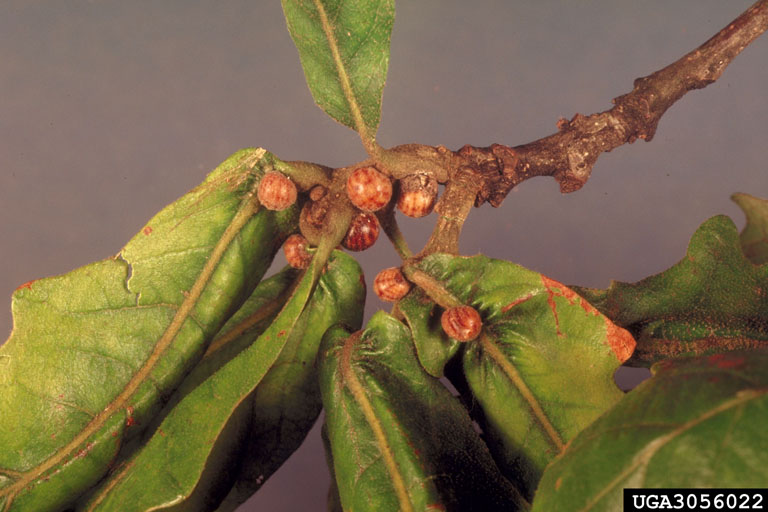 |
Kermes scale insects (Hemiptera) on white oak (Quercus alba). J. Solomon, USFS, Bugwood.org
|
|
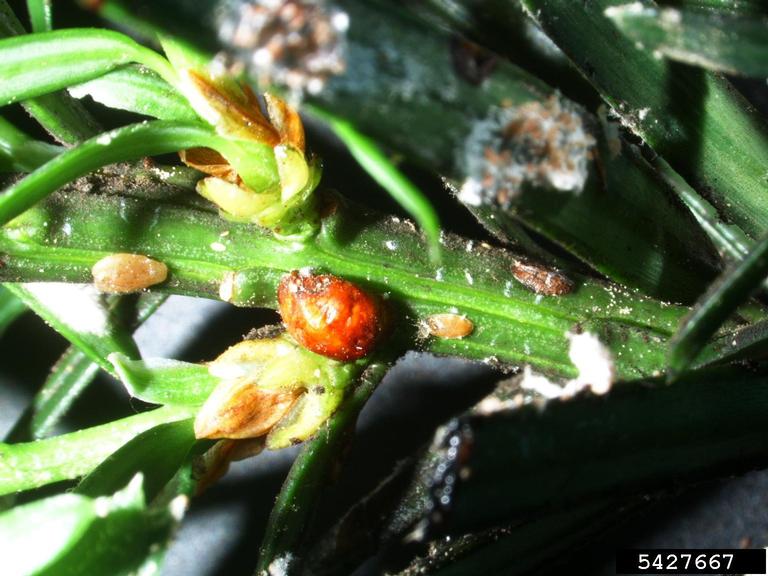 |
Cottony camellia scale (Hemiptera) on yew (Taxus). E.R. Day, VPISU, Bugwood.org
|
|
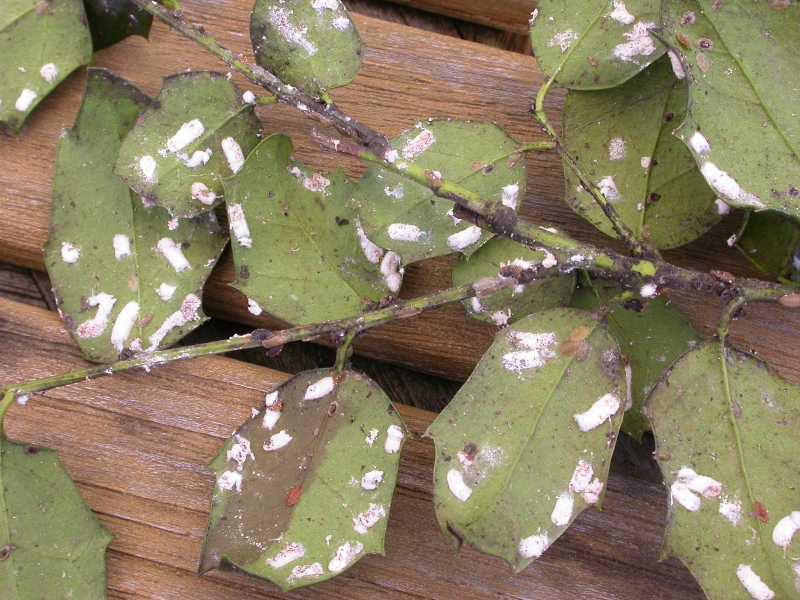 |
Scale (Hemiptera) on underside of holly leaves (Ilex 'Mesog' CHINA GIRL).
|
|
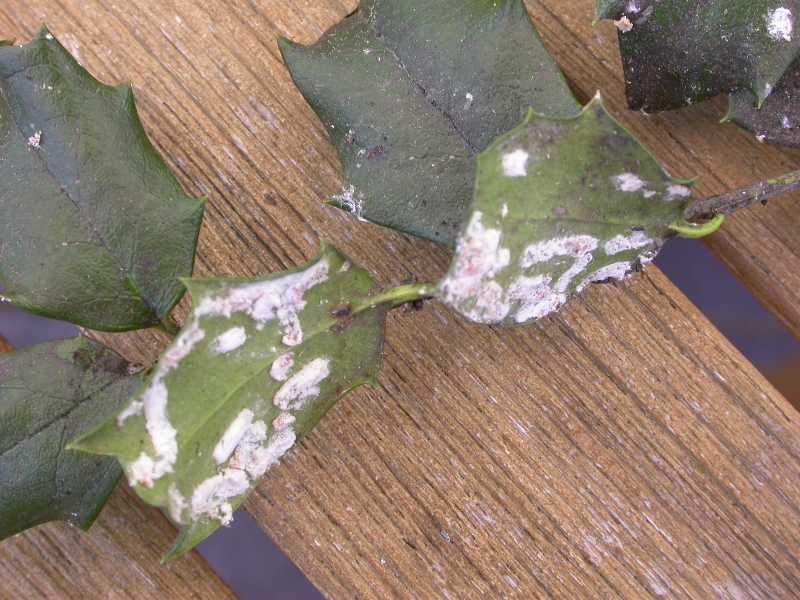 |
Scale (Hemiptera) on underside of holly leaves (Ilex 'Mesog' CHINA GIRL) and sooty mold on upper leaf surfaces.
|
|
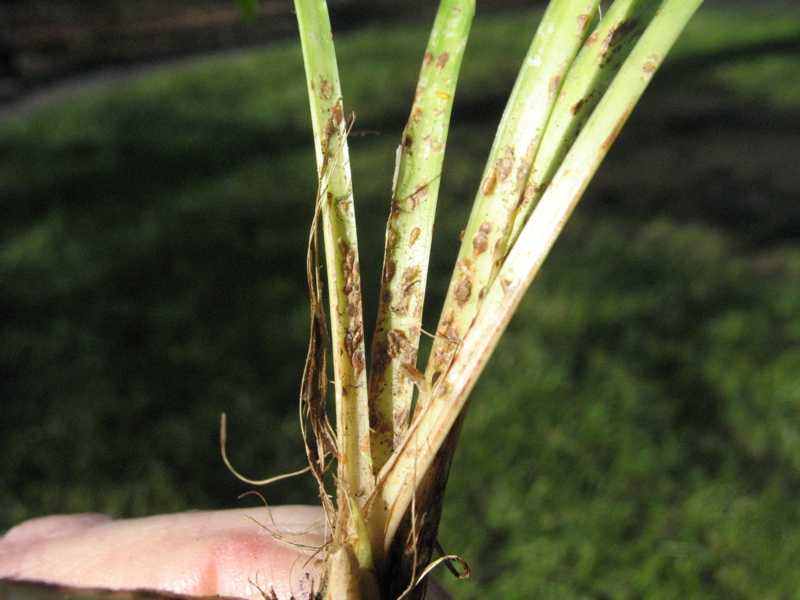 |
Scale insects (Hemiptera) on lily turf (Liriope)
|
|
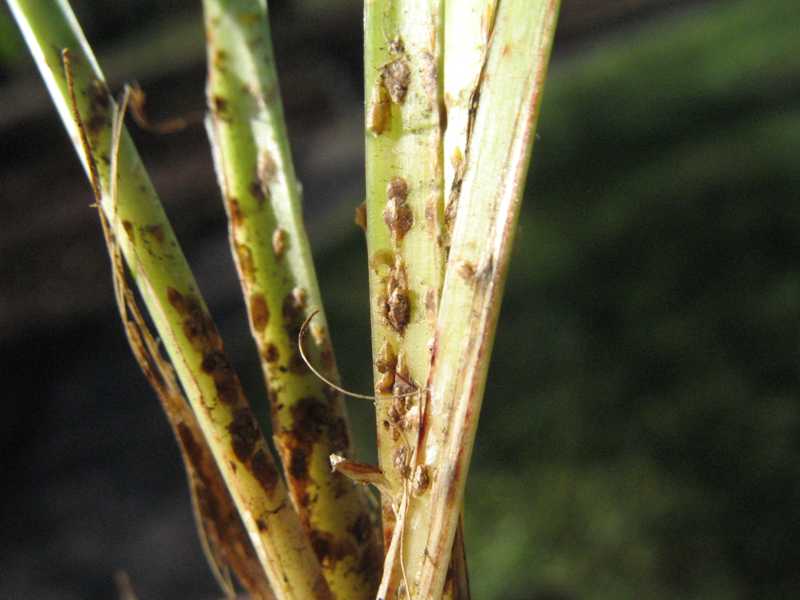 |
Scale insects (Hemiptera) on lily turf (Liriope)
|
|
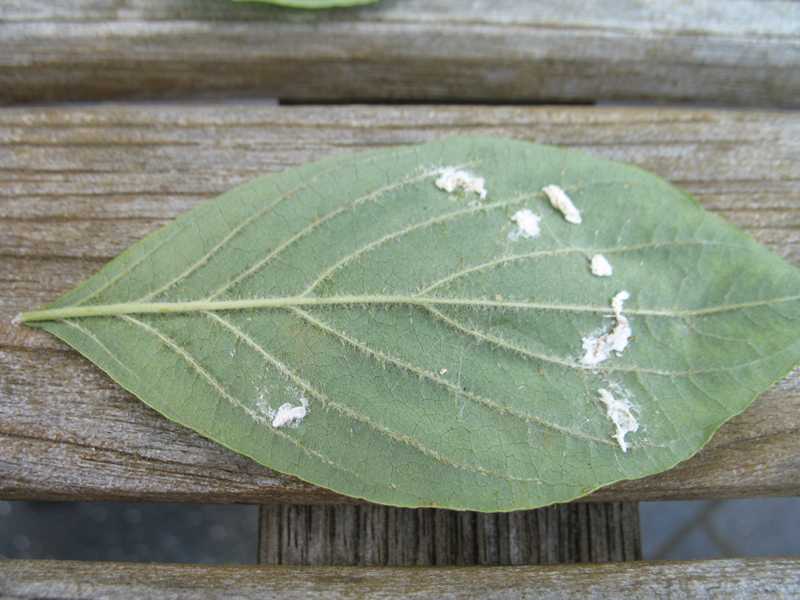
|
Cottony maple scale on underside of flowering dogwood leaf (Cornus florida).
|
|
|
|
|
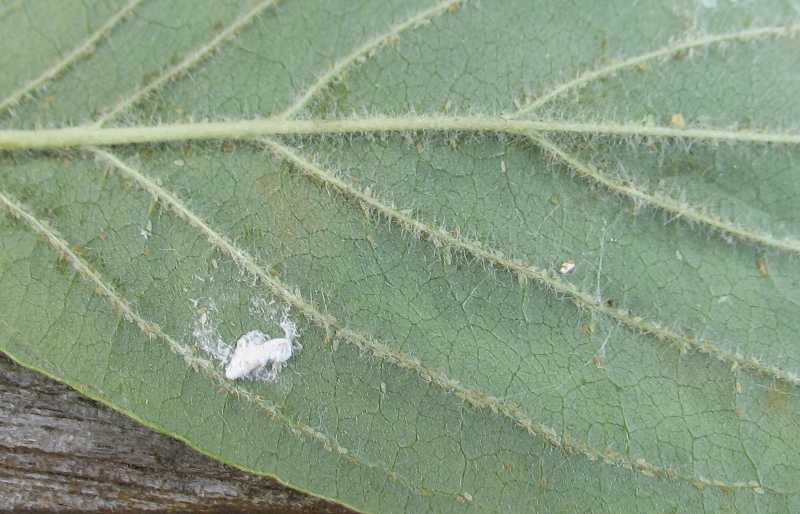 |
| Close-up view of cottony maple scale (Hemiptera) on underside of flowering dogwood leaf (Cornus florida). Look close! There are tiny crawlers along the leaf veins.
|
|
 |
Scale (Hemiptera) on grape vine (Vitis)
|
|
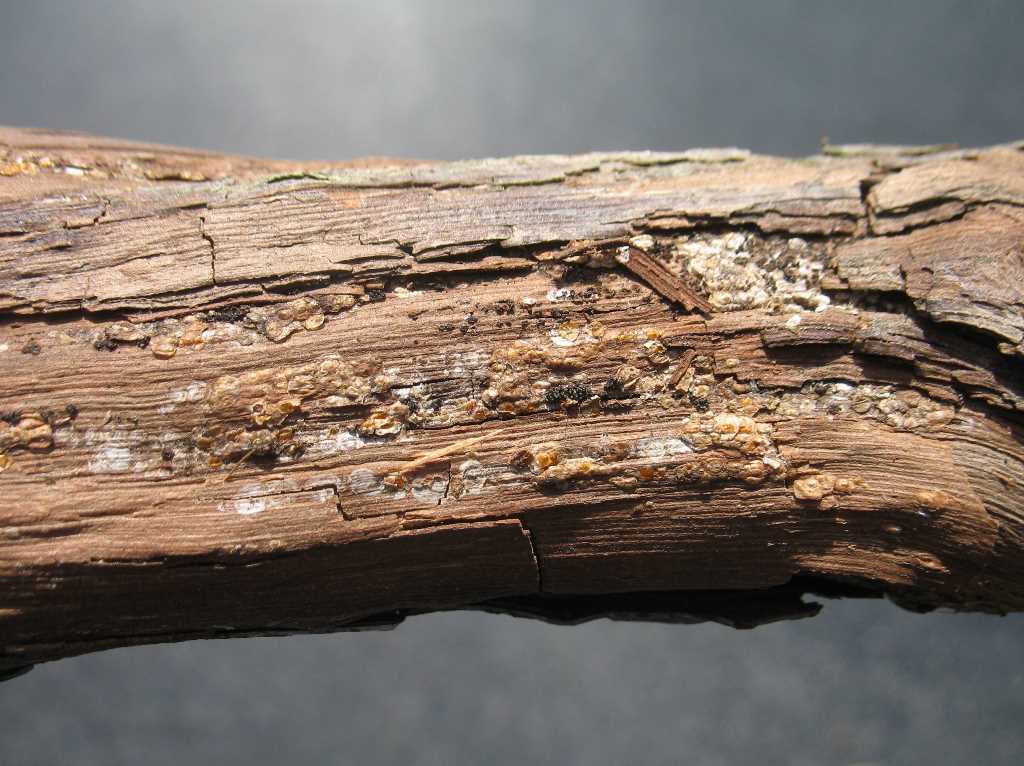 |
Scale (Hemiptera) on grape vine (Vitis)
|
|
|